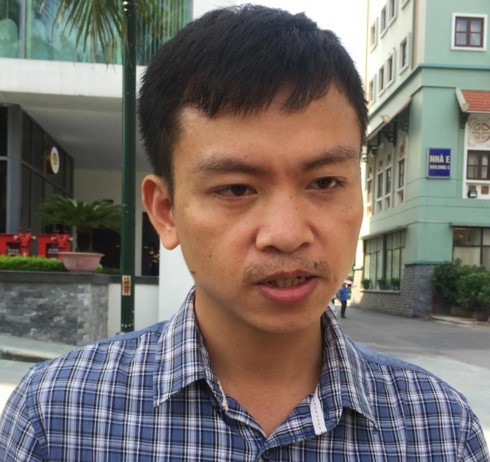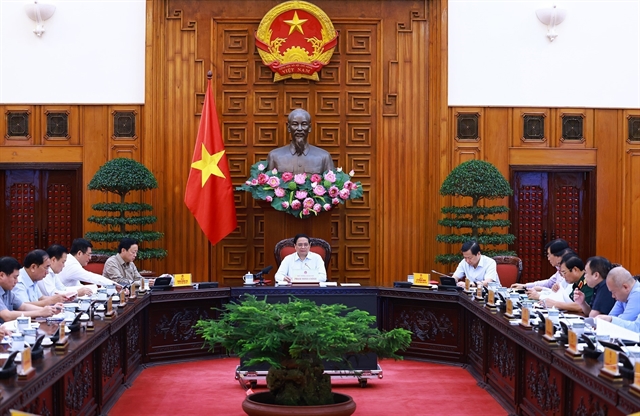 Economy
Economy

As renewable energy becomes a stronger global trend, it is still a nascent industry in Việt Nam, with great potential for growth, especially in solar energy. Đỗ Đức Tưởng, Clean Energy Advisor with the USAID Energy Programme, speaks with the Vietnam News Agency about this issue.
 |
| Đỗ Đức Tưởng |
As renewable energy becomes a stronger global trend, it is still a nascent industry in Việt Nam, with great potential for growth, especially in solar energy. Đỗ Đức Tưởng, Clean Energy Advisor with the USAID Energy Programme, speaks with the Vietnam News Agency about this issue.
How would you assess renewable energy development in Việt Nam, especially solar power?
The world has developed very strong renewable energy sources, including solar power, but this is still a new field here. Việt Nam has great solar energy potential. As of now, Việt Nam has had only around 200MW of wind power and about 80MW of solar power that is connected to the national electric grid.
The Government has issued policies on encouraging investment in renewable energy, solar power and wind power in particular, aiming to create favourable conditions for investors and businesses. For instance, there will be import tax exemption for products and equipment that Việt Nam does not produce.
Companies investing in solar power will enjoy corporate income tax exemption for the first four years. They will also enjoy reduced tax in succeeding years.
These preferential policies are considered key to opening the door for renewable energy development in Việt Nam. As a result, new projects have been registered to produce a total output of 12,000MW. That’s a good sign.
The National Power Development Plan VII for the 2016-2030 period with vision until 2050 has a target of producing about 850MW of solar power by 2020. Is this feasible?
In my opinion, the development plan VII is very cautious. Việt Nam sets target at producing 850MW of solar power by 2020 and 12,000MW by 2030, but its solar power potential is huge. It can produce over 20,000MW of solar power.
The issue is whether the Government sees 850MW as a ceiling, or it is just a target set to encourage development of solar power.
After discussing this with experts and scientists, I know that the 850MW target is not the ceiling rate and that the Government will support all solar power projects even if the registered total output is higher.
Despite the priority policies for development of renewable energy the number of investors remains modest. Why?
Although Việt Nam has a (reasonable) price mechanism for renewable energy, there are many other related factors, like the infrastructure of transmitting electricity. I know there are areas where a lot of solar power projects are registered, but transformers in those areas cannot absorb electricity from those projects.
In addition, the state has preferential policies but implementation of those policies depend on many issues and many procedures, like adding the project to the electricity production plan, the plan for electricity development in localities, land issues and agreement on selling electricity with EVN.
All these issues will have an impact on investors in terms of finance and time, not excluding the risks that they have to face in the process of developing the project.
Besides, with regard to connecting with the national grid and security of electrical systems, the current system will face more risks when we have more forms of renewable energy in production.
We need to have certain technical solutions, such as development of infrastructure, counting systems, intelligent control systems, and smart electrical systems. The development of these can reduce the negative impact of renewable energy on the current electricity system.
Therefore, besides the government’s incentive policies, the power industry needs to invest more in infrastructure to support the development of renewable energy sources. With the current infrastructure, it will be very difficult to develop renewable energy.
There is an opinion that if Việt Nam wants to develop renewable energy, it must reduce the number of thermal power plants that it has planned. Your comment?
Previously, coal and gas were preferred the world over because of their stability, while wind power and solar power were seen as supplementary sources. But now, the world is giving priority to developing renewable energy, and coal and gas are no longer considered main sources.
Việt Nam has 20,000MWof electricity from hydropower plants. Given the hydropower potential, we are completely confident that Việt Nam can focus more on renewable instead of thermal power. – VNS









